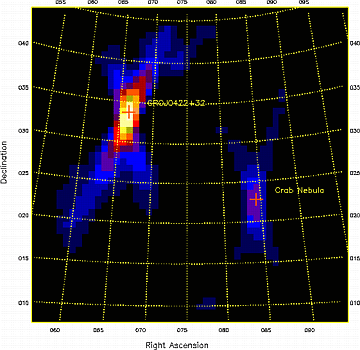
Before 1991, descriptions of the gamma-ray burst problem acknowledged the wide range of feasible models, but focused with increasing confidence on the view that these bursts arose in a nearby population of galactic neutron stars. In a rather dramatic development, the presentation of the initial BATSE spatial and flux distributions at the 1st Compton Symposium abruptly overturned established thinking and gave strong support to the idea that bursts represent titanic energy releases at cosmological distances. To many, establishing the gamma-ray burst distance scale is a principal problem of high-energy astrophysics. Discoveries during the CGRO mission, such as the great variety of gamma-ray burst time structures and spectral shapes and the existence of multi-GeV photons persisting for over an hour after the onset of the burst event, emphasize that the basic physics of these explosive events remains largely unexplained. Indeed, if burst are truly cosmological, the problem of releasing a supernova's worth of energy in such a highly relativistic form proves a severe challenge to most radiation models. As described in the body of this report, progress on the problem will require a significant improvement in burst sensitivity, particularly at high energies, and careful coordination with other wavebands. Several missions in the post-GRO era present exciting opportunities for advancing our understanding of these enigmatic events. Another important result of the CGRO mission has been the observation of certain strong, non-thermal emission associated with jet sources. In particular, the detection of over 50 "blazars" by the EGRET experiment, often with large and rapid flux variations and hard photon spectra extending above a GeV, shows that the AGN engine exhibits dramatic effects in this energy range. Two of these AGNs have been detected by ground-based telescopes with energies up to 5 TeV and doubling time variability as short as 15 minutes. These AGN are objects of intense study at lower energies; in particular, many GeV blazars exhibit "superluminal" motions at VLBI scales emphasizing the important connections of ground-based studies with gamma-ray observations. The correlation of outburst events in high angular resolution images with high-energy fluctuations hints at the mechanics and products of the AGN engine.

Figure 1.2 - The black hole candidate GRO J0422+32 at peak outburst, outshining the nearby Crab pulsar.
A related series of discoveries stems from the BATSE monitoring of X-ray outbursts along the galactic plane. Several sources show hard spectral tails extending beyond several tens of keV and approaching 1 MeV. Some sources showing strong outburst activity were recently discovered to show evidence of relativistic jet outflows in the radio band. Jet production has been a puzzle for several decades. These new measurements suggest that the hard X-ray/soft gamma-ray emission of accreting sources are spectral fingerprints of such jet activity. The nonthermal observations provide unique information on the particle and radiation fields in these jets. Gamma-ray detections should thus provide key probes of the nuclear activity/jet connection. When a new wavelength range is opened, the most intriguing results arise when a class of sources not prominent at other energies dominates the sky. At MeV-GeV energies, SAS-2 and COS-B showed that there is a significant population of galactic sources not identified with previously known objects. CGRO with improved sensitivity, energy resolution and background modeling has surveyed this population, detecting over thirty such objects. Since Geminga, the brightest of these sources, has now been identified as a radio-quiet pulsar, it seems likely that many others will be spin-powered pulsars. This provides an important new window on the neutron star population in our galaxy. Equally exciting is the possibility that other classes of gamma-ray stars will be discovered; the detective work of identifying the galactic plane population will be a theme in follow-on work to CGRO.